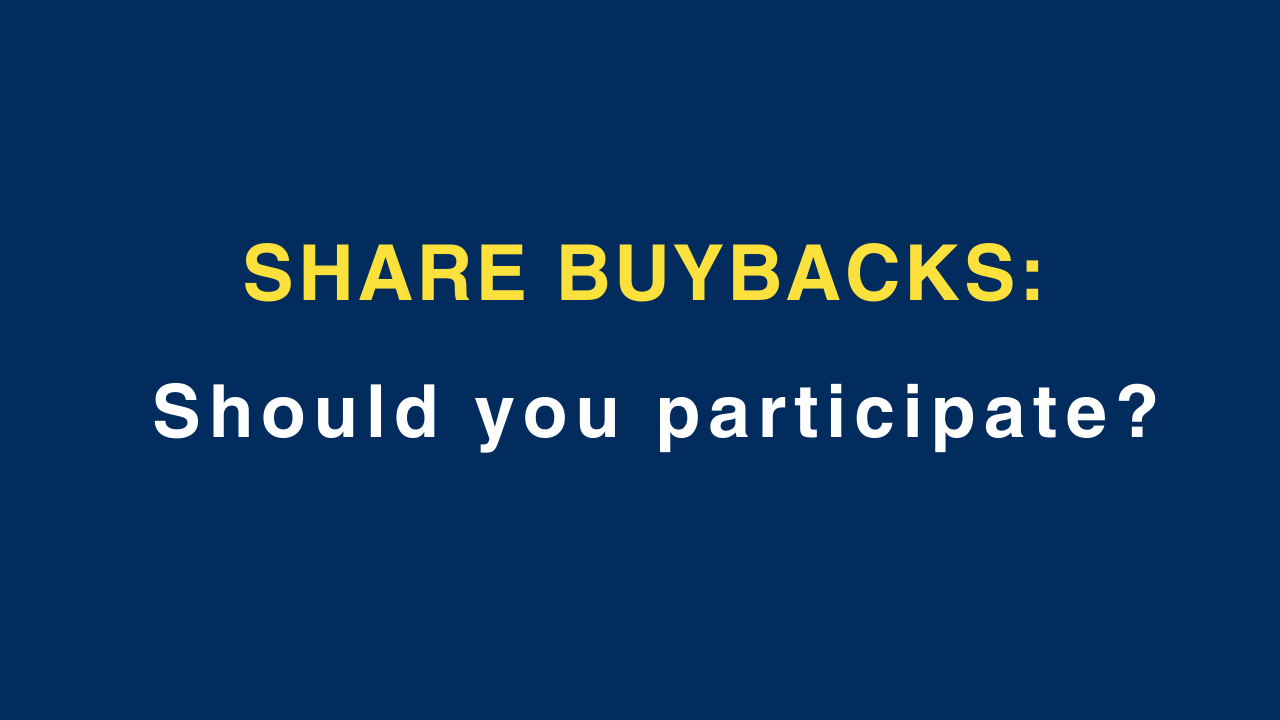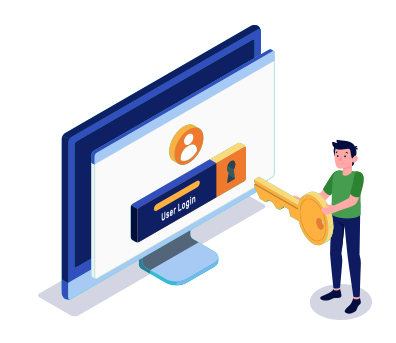Latest news & updates from us

Strap: The answer depends on a variety of factors such as the buyback mechanism adopted, the premium offered, and the acceptance ratio.
When companies reach the mature stage of their life cycle, they turn into what the BCG (Boston Consulting Group) Matrix refers to as a “cash cow”. These companies are profitable. The growth stage of their life cycle is behind them, so they don’t require the cash to make fresh investments, and hence are able to generate regular free cash flows.At this stage, companies can do one of three things: distribute dividend to investors; buyback shares from the markets; or use the money to fuel inorganic growth. Many IT companies in India have in recent times opted for the Share buybacks route.
Share Buybacks is one way through which a company tries to reward its shareholders. When a company buys back shares from the market, its total number of outstanding shares reduces. For the same level of earnings, if the number of outstanding shares has declined, the company will enjoy a high earnings per share (EPS). A higher EPS will in turn translate in a higher price for the stock even if its valuation (PE) remains unchanged.
Sometimes,buybacks signal that the management thinks that the stock’s price is lower than its intrinsic value. The share buybacks is one way through which the management tries to improve shareholder value.
One negative of buybacks is that it signals that the company doesn’t see business opportunities for deploying its surplus cash, as is indeed the case with IT companies, owing to the ongoing slump in the sector’s prospects.
Buybacks have also become popular in India because they are more tax-efficient, especially for high net worth investors. Incase of a dividend payout, the company first pays a dividend distribution tax of 20.90 per cent. Also, in the previous two budgets, the government imposed an additional tax of 10 per cent on high net worth investors (including HUFs) and then on partnership firms which receive a dividend income of more than Rs 10 lakh in a financial year. This has made buybacks a much more attractive way of rewarding investors.
The attractiveness of a buyback offer depends on several factors. One is whether the share buybacks price is at a premium to the existing market price. If the premium is at least 10-15 percent, investors may take advantage of the buyback offer. Even if they think that the long-term prospects of the stock are good and they should hold it, they should sell in the buyback and repurchase those shares later during price dips. This advice holds true if the buyback allows them to sell off only a small proportion of their total holdings, say, 5-7 percent. Investors should in such cases take advantage of the arbitrage opportunity. This advice is also more relevant for investors who track the markets regularly and can engage in such opportunistic selling and buying. Those who track the performance of their stocks only periodically, say, every three-six months, may not be able to pull this off.
The other factor that investors should take into account is the acceptance ratio. This is the ratio of the total number of stocks being bought back to the total number of outstanding shares of the company. If the acceptance ratio is very low, the effort of participating in the buyback offer may not be worth it. Nowadays, the market regulator has made it mandatory to reserve 15 percent of a buyback offer for retail investors, which results in an improved acceptance ratio.
Another point to take into consideration in a buyback is whether it is made through the tender route or the open market route. In the tender route, the company fixes a price (at a premium to market price) and buys back a proportionate number of shares. This is a much more shareholder-friendly route than the open market route. In the open market offer, the company appoints a broker who buys back shares from the market over a period of time, says, six months. This approach is not very shareholder friendly. The broker may purchase shares when prices are down over this period, so the shareholders do not stand to benefit much. The only advantage here is that the buyback lends support to the share price.
Do remember the tax implications of buybacks. If you have held the shares of the company for more than 12 months, your gains upon sale of shares will not attract any tax liability. But if you have held them for less than 12 months, you will have to pay tax on the short-term capital gain at 15 ppercent
Instead of engaging in a buyback or dividend payout, companies sometimes go in for takeovers. If a company takes over another in a related field of business with which it has a high level of synergy, the result may be good. But sometimes promoters undertake takeovers of companies belonging to an altogether different line of business because of overconfidence in their ability to run any business successfully. Such takeovers often have unhappy results. Peter Lynch, a renowned fund manager, referred to them as “diworsefication”. This is perhaps the worst way in which promoters or management can make use of the company’s excess cash pile.
Unlock Stocko's Video Vault: Podcasts, Analysis & Tips Inside!
11 October 2024
Stocko New Features Alert! Coming soon!
26 September 2024
SAS Online is Now Stocko !
21 September 2024

Simply fill the details, connect your bank account & upload your documents.
Open An AccountYou will be redirected in a few seconds.
Antonia Finnis
I truly love your blog.. Pleasant colors & theme.
Did you build this amazing site yourself? Please reply back as I'm hoping to create my own site and want to know where you got this from
or exactly what the theme is called. Thanks!
Jefferson Ervin
My name is Margherita, and I just had to leave a comment here.
Your blog is so interesting, and it’s always great to find such thoughtful ideas.
By the way, if you’re looking for something exciting, you should absolutely check out Bubichat!
It’s such a fun platform where fun conversations happen all
the time.
I love it there because it’s a great way
to meet someone special and enjoy private chats.
Join me there if you’re in the mood for something different!
I’m usually there, and who knows – we might chat soon!
Keep up the awesome work! private sexting rooms
Hugs Waiting on bubichat.com
Dan Harder
Irwin Casino – ваш выбор! Лучшие игровые
автоматы, вознаграждения для
всех и надёжные финансовые операции – всё это доступно без лишних сложностей!
Irwin новый клиент чтобы начать
своё приключение.
Почему тысячи игроков выбирают Irwin Casino?
Широкий ассортимент развлечений известных брендов.
Еженедельные розыгрыши для всех
пользователей.
Оперативный вывод средств
на банковские карты и криптовалюту.
Дизайн, адаптированный под мобильные устройства без зависаний.
Дружелюбная поддержка отвечает мгновенно.
Создавайте аккаунт уже сегодня и наслаждайтесь выигрышами с максимальными шансами!
Gabriella Shellshear
удивительная возможность получить новые
возможности. Особенно если вы играете на Android, модификации открывают перед вами огромный
выбор. Я лично использую взломанные игры, чтобы удобнее
проходить игру.
Модификации игр дают невероятную персонализированный
подход, что погружение в игру гораздо красочнее.
Играя с модификациями, я могу повысить уровень сложности, что
добавляет виртуальные путешествия и делает игру более захватывающей.
Это действительно интересно, как такие модификации могут улучшить игровой процесс,
а при этом не нарушая использовать такие модифицированные приложения можно без особых опасностей, если быть внимательным и следить за обновлениями.
Это делает каждый игровой процесс персонализированным, а возможности практически бесконечные.
Обязательно попробуйте попробовать такие игры
с модами для Android — это может вдохновит на новые приключения
Jake Beckett
«а как легально поменять криптовалюту в обычные деньги?.
Самое интересное, спрашивают даже опытные.
Вроде бы ничего сложного: продал —
вывел. На практике возникают вопросы.
Особенно как только начинается обсуждение про легальность.
Вот почему захотелось поделиться понятным разбором без воды.
Почему все боятся слова «легально»
Когда обсуждают про официальный
обмен, большинство автоматически думают о налогах.
На самом деле легально — это не больно.
Это значит: ты выбираешь сервисы, которые зарегистрированы.
Никто не вынуждает тебя нарушать закон.
Основные способы легально поменять крипту в
рубли
На сегодняшний день есть несколько адекватных методов.
Самый популярный — с помощью крупные криптосервисы.
Пользователь обмениваешь актив, а после этого
выводишь рубли на карту. минимальный обмен
биткоинов
Ещё один способ — официальные обменники.
В этом случае важно выбирать историю работы.
Peer-to-peer тоже бывает законным, когда
проходит внутри сервиса.
Наблюдение
По собственным ощущениям скажу: меньше всего проблем
возникает именно у больших сервисов.
В таких местах уже выстроены процессы, есть поддержка, а все действия прозрачны.
Конечно: порой подтвердить личность.
Но ты знаешь, что по факту меняешь крипту без блокировок.
Моё мнение
Для себя выбираю одну простую стратегию: разобраться самостоятельно.
Обычно нужно пары минут, чтобы понять, насколько эта платформа.
Официально обменять криптовалюту сейчас возможно.
Основное — не искать серые схемы.
Когда у вас есть что рассказать обмена — поделись
в комментариях. Думаю, многим пригодится.
законно ли обналичивать криптовалюту в россии